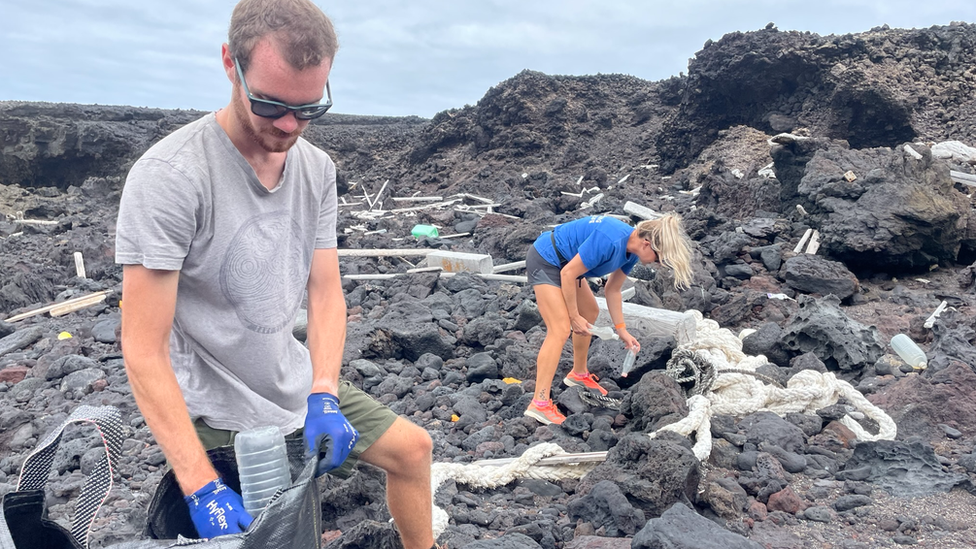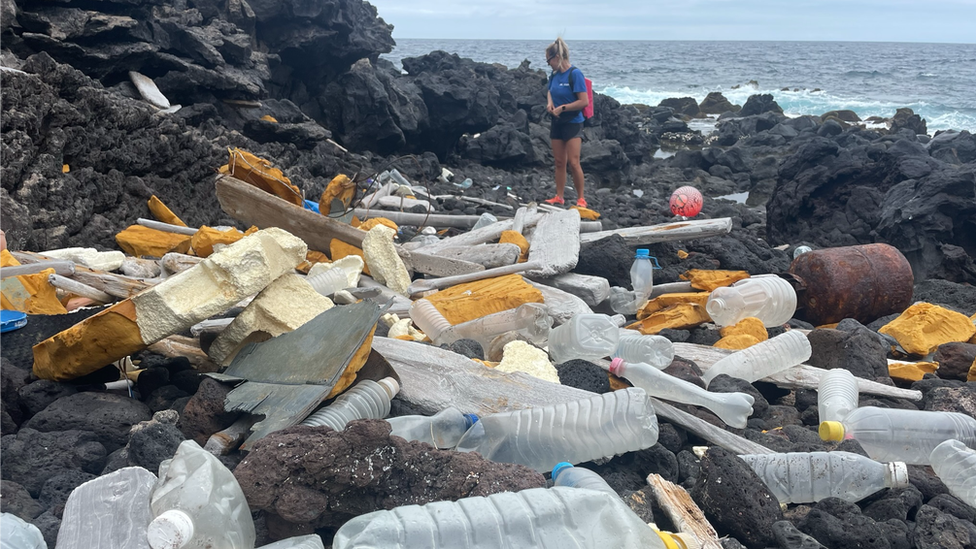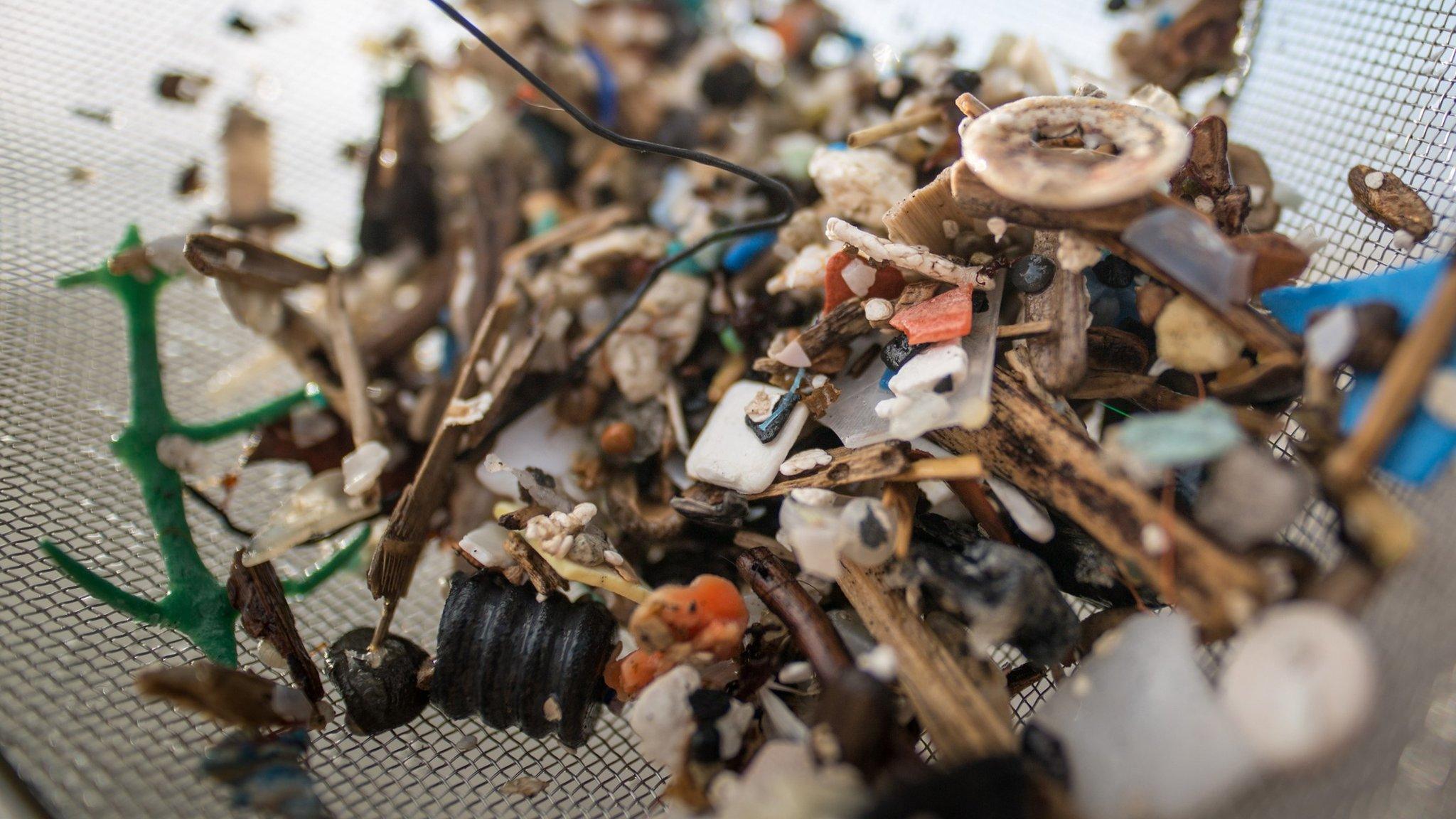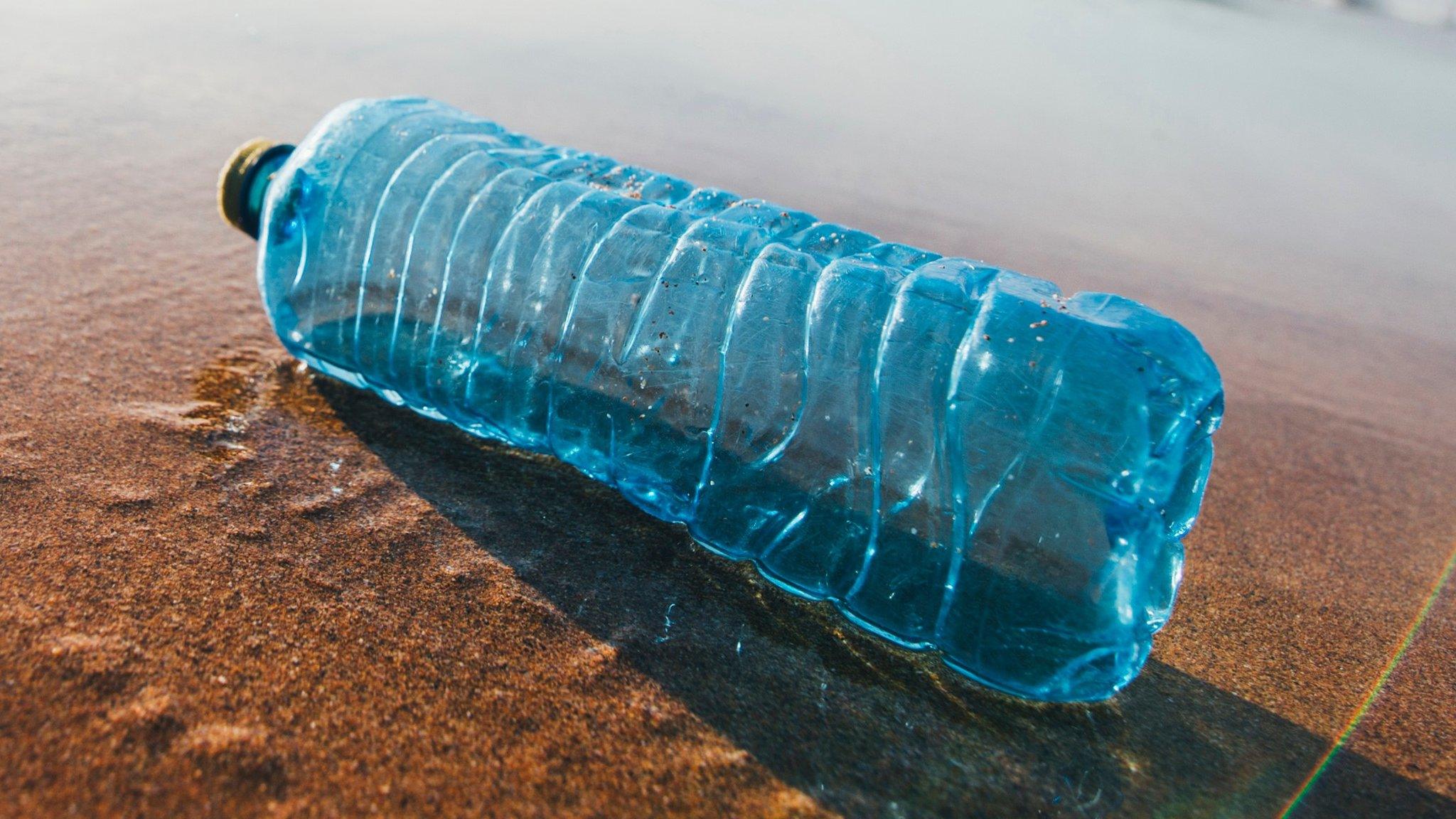Plastic waste: Thousands of pieces of rubbish wash up on remote island
- Published
- comments

Thousands of pieces of plastic waste from all over the world has been washed up on an isolated island.
Conservationists say the litter has been found on Ascension Island, which is a volcanic island in the South Atlantic Ocean, and the waste is thought to come from countries including China, Japan, South Africa and more.
The Zoological Society of London (ZSL) has spent five weeks examining what happened and they say the amount of plastic pollution there is putting more than 900 species of marine species at risk.
This includes animals like the land crab, the frigate bird and various species of sharks, turtles, fish and seabirds.
What did they find?

"Plastic is a great material, but it never goes away", says Fiona Llewellyn
The types of plastic the ZSL found the most often on the island's coastline included plastic bottles, hard plastic fragments that have broken down, fishing gear and left over cigarettes.
A marine biologist at the ZSL Marine conservation team called Fiona Llewellyn, said they found 1,000 pieces of plastic waste in just one beach hut and more than 7,000 pieces in total.
The small island has a population of just 800 people and the ZSL say that only a small amount of plastic left on the shore is coming from the island itself.
It was heart-breaking seeing the state of the plastic over there"
Fiona said: "It's easy to see that most of it is coming from elsewhere."
Animals are eating the plastic and getting tangled in it, which can cause harm.
There are also growing concerns around microplastics in the ocean and how they are working their way through the food chain.
The remote British-owned island has been subject to many schemes aiming to conserve its natural biodiversity, and much of the waste ends up beached on rugged cliffs that are hard and dangerous to reach.
The whole project will last for three years and will monitor the currents and movement of water, try to identify the plastic bottles and study their expiry and production dates to work out when they might have entered the water and where from.
- Published1 May 2020

- Published17 March 2020

